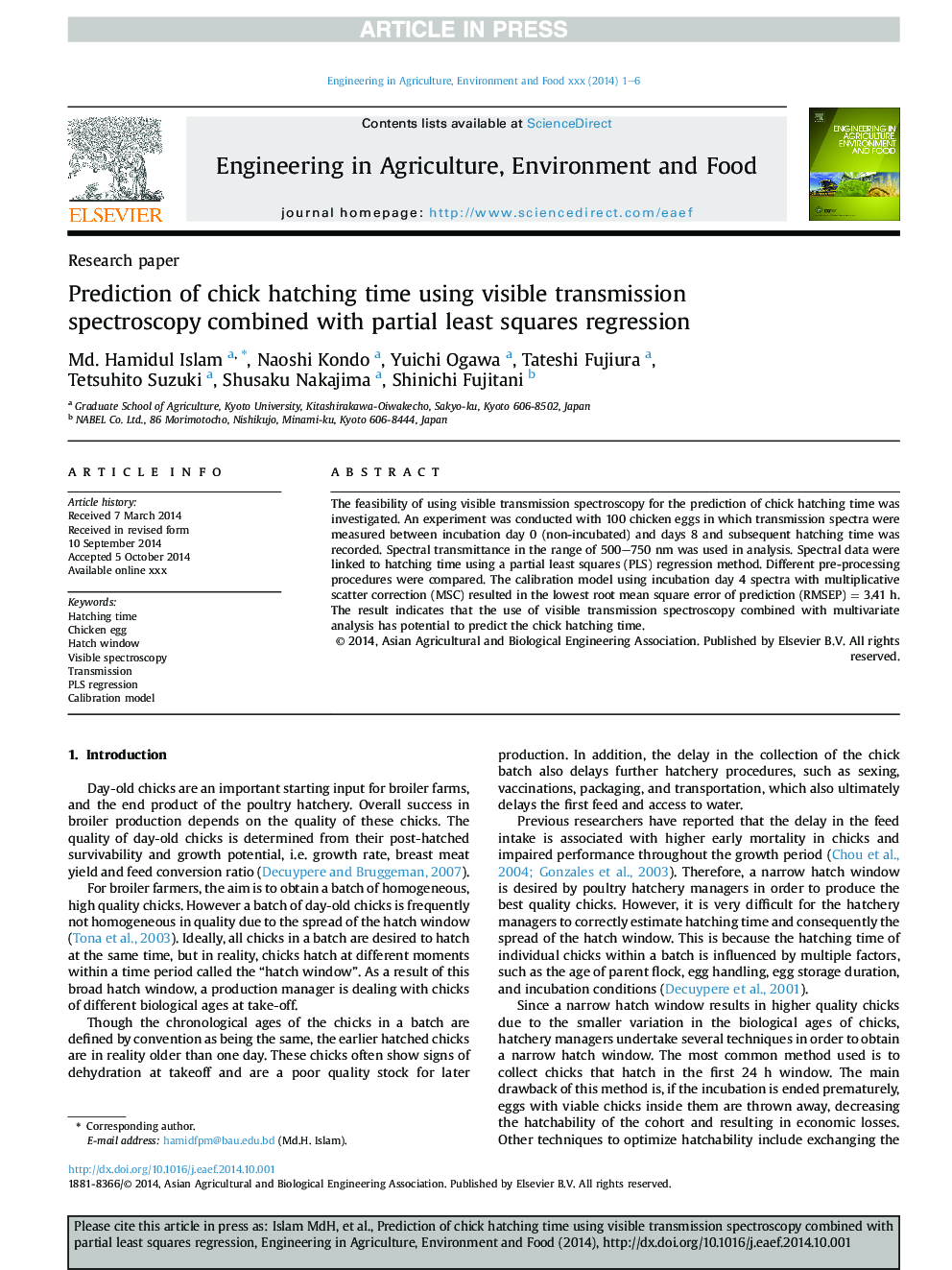| Article ID | Journal | Published Year | Pages | File Type |
|---|---|---|---|---|
| 6482120 | Engineering in Agriculture, Environment and Food | 2015 | 6 Pages |
Abstract
The feasibility of using visible transmission spectroscopy for the prediction of chick hatching time was investigated. An experiment was conducted with 100 chicken eggs in which transmission spectra were measured between incubation day 0 (non-incubated) and days 8 and subsequent hatching time was recorded. Spectral transmittance in the range of 500-750Â nm was used in analysis. Spectral data were linked to hatching time using a partial least squares (PLS) regression method. Different pre-processing procedures were compared. The calibration model using incubation day 4 spectra with multiplicative scatter correction (MSC) resulted in the lowest root mean square error of prediction (RMSEP)Â =Â 3.41Â h. The result indicates that the use of visible transmission spectroscopy combined with multivariate analysis has potential to predict the chick hatching time.
Related Topics
Life Sciences
Agricultural and Biological Sciences
Agronomy and Crop Science
Authors
Md. Hamidul Islam, Naoshi Kondo, Yuichi Ogawa, Tateshi Fujiura, Tetsuhito Suzuki, Shusaku Nakajima, Shinichi Fujitani,
